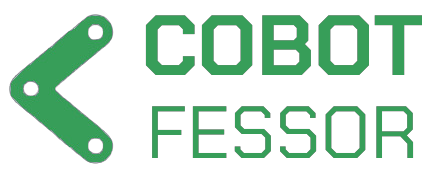Programming Industrial Robots vs. Programming Cobot: Bridging the Automation Divide
Automation has become an integral part of modern industry, revolutionizing manufacturing processes and productivity. At the heart of automation are robots, both traditional industrial robots and the newer collaborative robots, or cobot. One key aspect that differentiates these robots is the programming process. In this blog, we’ll delve into the differences and similarities between programming industrial robots and programming cobots.
Programming Industrial Robots
Technical Expertise
Programming industrial robots has traditionally required specialized technical expertise. Experienced engineers and technicians were responsible for creating intricate code to operate these machines. This process demanded a deep understanding of robot kinematics and complex programming languages.
Offline Programming
Industrial robots often use offline programming, where the code is generated and tested in a separate environment before being deployed to the robot. This method provides a high degree of accuracy but can be time-consuming and costly.
Task-Specific Programs
Industrial robots are typically programmed for specific tasks, such as welding, painting, or assembly. Reprogramming them for new tasks often involves substantial changes and can result in downtime for reconfiguration.
Programming Cobots
User-Friendly Interfaces
Cobots are designed with a user-friendly approach. The programming interfaces are intuitive and accessible, often built for non-experts. This enables operators and workers to teach cobots new tasks without extensive technical knowledge.
Online Programming
Cobots primarily use online programming, meaning the robot can be taught and programmed directly on the shop floor. This simplifies the programming process and reduces the need for offline simulations.
Task Flexibility
Cobots are known for their task flexibility. They can be quickly and easily reprogrammed to perform a wide range of tasks. This adaptability is invaluable in industries with frequent production changes.
Bridging the Gap
As automation technology advances, we can see a convergence in programming methodologies between industrial robots and cobots. Some industrial robots now offer more user-friendly interfaces, while cobots are becoming more powerful and capable of handling complex tasks. This convergence is due to the shared goal of simplifying programming processes.
The Advantages of Programming Cobot
Cobot programming has distinct advantages:
Accessibility: Cobots democratize robotics programming by allowing non-experts to teach and modify robot behavior, making automation more accessible.
Efficiency: Online programming means that cobots can be reconfigured quickly, minimizing downtime and increasing overall efficiency.
Versatility: Cobots can handle a wide variety of tasks, making them highly adaptable to changing production needs.
Choosing the Right Automation Solution
The choice between industrial robots and cobots often depends on the specific requirements of a task. For heavy-duty, high-precision applications, industrial robots may still be the better choice. However, for industries where flexibility, safety, and ease of programming are crucial, cobots are a clear winner.
Conclusion
Programming industrial robots and programming cobots represent two different worlds of automation, and in this comparison, cobots emerge as the more favorable choice for many modern industries. Cobots prioritize user-friendliness, accessibility, and versatility in their programming, making automation more inclusive and adaptable.
Cobots empower a wider range of individuals to program and reprogram these robots without extensive technical knowledge, ultimately reducing the barriers to entry for automation. Their online programming capabilities streamline the process, reducing downtime and increasing overall efficiency. Furthermore, cobots’ innate versatility makes them a strong contender in industries with ever-changing production needs.
As the automation landscape continues to evolve, cobots are at the forefront, democratizing automation, promoting safety, and offering a nimble and versatile solution for a wide range of industries.
